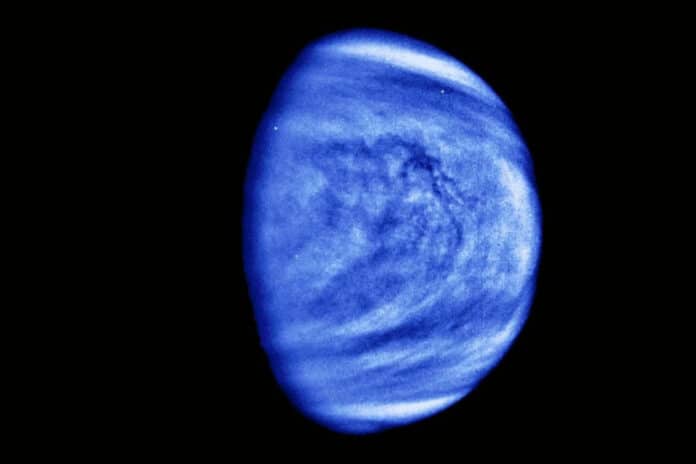The occurrence of Venusian lighting has been debated for decades. Terrestrial lightning generates whistler waves, and many whistlers have been observed in Venus’s ionosphere and induced magnetosphere.
Based on these whistler observations, Venusian lightning occurrence rates are high. Though highly uncommon, optical flashes have yet to be seen on Venus after several spacecraft visits.
In new research, space physicists at CU Boulder have jumped into this surprisingly long-running debate: Does lightning strike on the second planet from the sun?
The team’s findings provide compelling new evidence that, in most cases, you probably wouldn’t see lightning strikes flashing from Venus’ dense, acidic clouds.
Scientists turned to NASA’s Parker Solar Probe to explore this extreme world. The spacecraft whizzed by Venus in February 2021 at about 1,500 miles. While doing so, its instruments detected scores of “whistler waves”—energy pulses that, at least on Earth, can be caused by lightning strikes. The team’s research suggested that rather than being driven by lightning, Venus’ whistler waves may result from disturbances in the planet’s weak magnetic fields instead.
Parker Solar Probe‘s FIELDS Experiment, a collection of electric and magnetic field sensors that protrude from the spacecraft, was employed by George, Malaspina, and their colleagues to identify those signals. But when the scientists examined a collection of those whistlers, they found an unexpected thing: Venus’ whistler waves were traveling in the opposite direction. They didn’t appear to be traveling into space as you might anticipate from a lightning storm but downward toward the planet.
Malaspina said, “They were heading backward from what everybody had imagined for the last 40 years.”
David Malaspina, a co-author of the new study, said, “They were heading backward from what everybody had been imagining for the last 40 years.”
It needs to be clarified what’s creating these reverse whistlers. The magnetic field lines that encircle Venus are thought to undergo a phenomenon known as magnetic reconnection, in which they split apart before exploding back together, according to George and Malaspina.
To rule out lightning as a cause, scientists said they must examine more whistlers for now. The Parker Solar Probe will make its final trip by Venus in November 2024, plunging to a height less than 250 miles above the surface and touching the top of the planet’s “soupy” atmosphere. This will be their next opportunity.
Journal Reference:
- H. George, D. M. Malaspina, K. Goodrich, Y. Ma, R. Ramstad, D. Conner, S. D. Bale, S. Curry. Non-Lightning-Generated Whistler Waves in Near-Venus Space. Geophysical Research Letters. DOI: 10.1029/2023GL105426
